
Painting by Conrad Wise Chapman.
“External view of Fort Moultrie, negroes at work, getting sand to repair fortifications. Shows some soldiers who have probably been out fishing; and in the distance can be seen blockading fleet.” – Conrad Wise Chapman, 1898
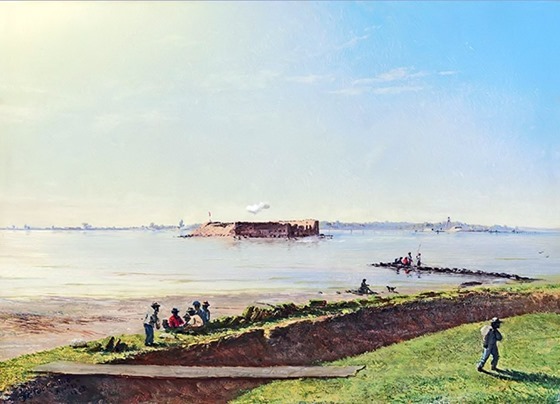
Painting by Conrad Wise Chapman.
“This is a view of Fort Sumter from Fort Moultrie; shows also battery on James Island. A shell is bursting over Fort Sumter. The artist stated he never looked in the direction of Fort Sumter that he did not see a shell bursting over it.” – Conrad Wise Chapman, 1898
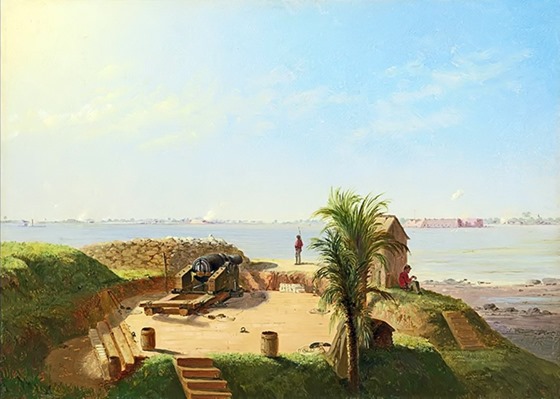
Painting by Conrad Wise Chapman.
This battery only had one gun and was close to Fort Moultrie. Forts Sumter and Johnson are seen in the distance. Near the palm tree was an old hotel – the Moseley House. A gun boat is out in the bay; and a shell can be seen bursting over Fort Sumter; the more shells that struck Sumter, the more impregnable it became, as their only effect was to level it and make it harder to take.” – Conrad Wise Chapman, 1898
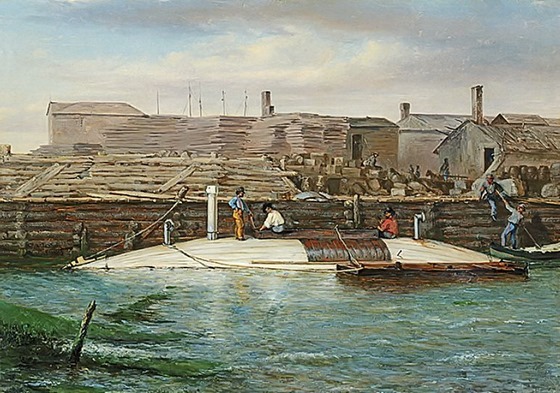
Painting by Conrad Wise Chapman.
“This was the first torpedo boat ever constructed; it is being repaired in one of the docks of Charleston; places may seen where the boat was struck by bullets. New plates are about to be placed into position.” – Conrad Wise Chapman, 1898
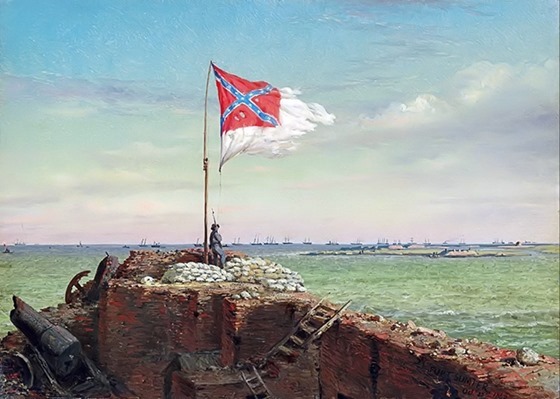
Painting by Conrad Wise Chapman.
“Shows sketch taken at about sun-down. In the distance can be seen Morris Island and the blockading fleet.” – Conrad Wise Chapman, 1898
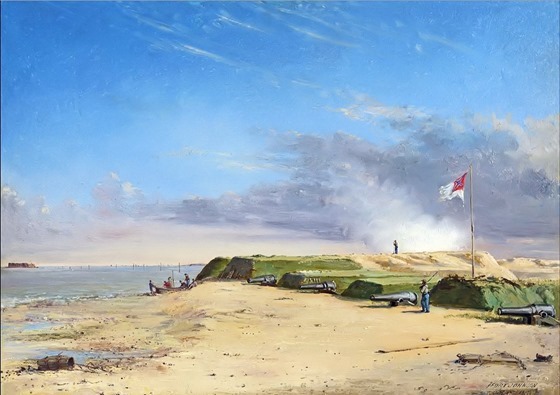
Painting by Conrad Wise Chapman.
“Shows also Fort Sumter and Morris Island. Telegraph poles can be seen, but there was no telegraphic communication at the time. The four guns displayed were very effective and considered as good as any to be had in those days; they could carry almost to the opposite side of the river. The artist took particular care in painting these guns. Observe the effect of the flag against the dark sky. Preparations are being made to dispatch a boat to Fort Sumter.” – Conrad Wise Chapman, 1898
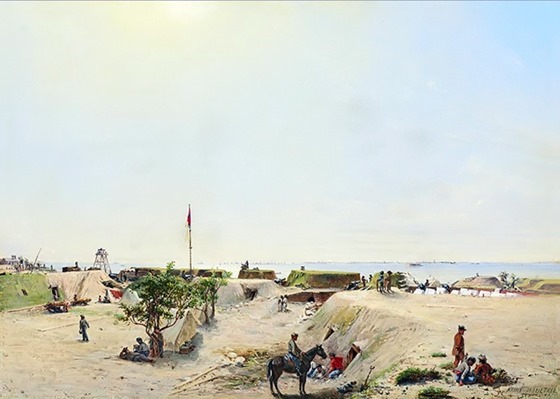
Painting by Conrad Wise Chapman.
“Interior view of Fort moultrie while the fortifications are being built. Shows the old Moultrie house, Battery Beauregard, and Battery Marion. Lieutenant Martin is on a horse belonging to Col. Tabb of the 59th Va. Regt.” – Conrad Wise Chapman, 1898

Painting by Conrad Wise Chapman.
“This is a fancy sketch by the artist, and simply designed to show the subterfuge that sometimes had to be resorted to when there was a lack of guns, or there was a delay in receiving them. The fortifications would be prepared, and ‘Quakers’ mounted until the arrival of real guns. The ‘Quaker’ were made of wood and painted black, and at a distance could not be told from the genuine article.” – Conrad Wise Chapman, 1898

Painting by Conrad Wise Chapman.
“Shows sally port of the Fort; party playing cards, also Elliott and his telegraph operator.” – Conrad Wise Chapman, 1898
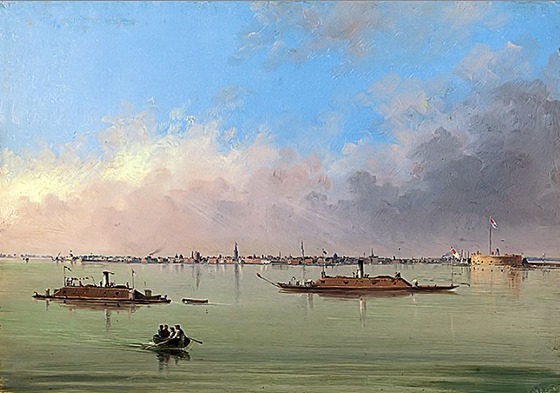
Painting by Conrad Wise Chapman.
“Shows the whole of Charleston and Castle Pinckney; here can also be seen what used to be called the ‘Ladies Gun Boat’,’ because it was constructed from proceeds raised by the ladies of Charleston by the sale of their jewels.” – Conrad Wise Chapman, 1898.
________
Note: The vessels shown are CSS Chicora and CSS Palmetto State.











